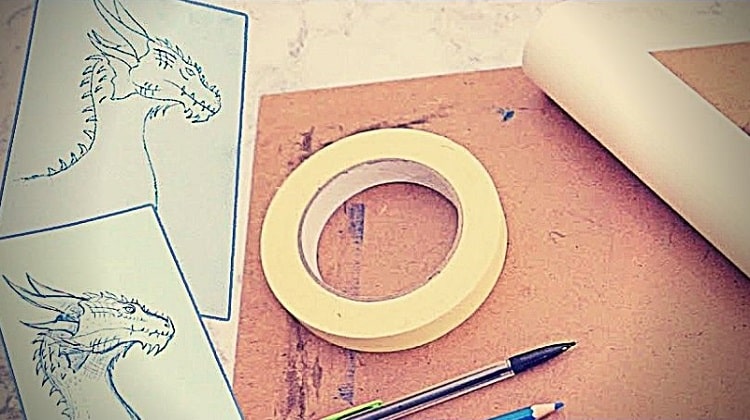Tracing paper is a valuable tool when creating drawings as copying other pictures can be done precisely and accurately, allowing for tracing paper to make its breakthrough for engineers and architects, and countless artists to make full use of its opacity today.
The transparency of tracing paper makes it useful, letting you see through it pretty easily. Because of this, tracing paper is being used widely for many purposes. But let's first address what tracing paper is and how it is used.

What Is Tracing Paper?
Tracing paper is a transparent sheet of paper made out of cellulose fibers, wood, and cotton, most commonly. Other materials are used to make this paper too, and it is often thin and transparent, enabling it to have many uses.
Materials that reduce opacity and translucence are removed from tracing paper to enhance the opacity, so the paper can be used to copy and overwrite anything that is kept underneath it.
For this reason, tracing paper comes with many uses - such as drawing structures for engineering plans and architectural designs, as well as art sketches, and much more.
How Is Tracing Paper Used?
Tracing paper can be used in countless ways, but let's consider the process of turning a drawing into a painting:
Firstly, place tracing paper on top of a surface that you want to copy - such as a drawing or image that you would like to trace. It's easier to trace if the image you are trying to trace has darker lines and has less complexity.
Make sure the tracing paper covers the entire surface and use masking tape to ensure that the tracing paper is held in place properly. Fold the edges of the tracing paper over the underlying surface and tape it down.
Take a graphite pencil and make sure that it is sharp enough to draw smooth lines. However, make sure not to press too hard when drawing on the tracing paper to avoid tearing and any marks falling underneath the paper.
Make sure the graphite pencil does not smudge. Now, using this graphite pencil, trace the visible lines from the image or underlying surface and do not put too much pressure when doing so.
After successfully tracing the image onto the tracing paper, you can now recreate the image you have just copied on another preferred surface.
Turn your tracing paper upside down onto a new surface and rub the flat part of your pencil along the lines that you have traced. This will make sure the image is replicated on the new surface.
After tracing over the lines with the blunt end of the pencil, you'll have a duplicate image on the underlying sheet. You can now use your pencil to draw over the lines to complete the line art and then modify it however you please.
The exact process can be done for fabric, too, so that designs can be easily printed onto a piece of fabric, so different forms of clothing can be made from it. Patterns and such are also printed on clothes in the same manner.
Another method that can be used to use tracing paper is by using tape. It is similar to the previous method, but this one is relatively easier.
The tape basically allows more sturdiness, so rather than having to fold the corners and edges of the tracing paper to hold the paper steady against the original image, the tape does it for you.
This will ensure that the tracing paper stays still and the copy of the drawing comes out as accurately as possible. Using the same tape, stick the tracing paper onto the surface you want to draw on and then simply copy it.
Therefore, tracing paper makes life easier for those looking to copy a sketch for all sorts of purposes - from art, engineering and architectural sketches, and even clothing! The opacity and transparency allow their usefulness to come to light.
Conclusion
Tracing paper is a transparent sheet of paper made of several materials, such as cotton, wood, etcetera, with the materials causing non-transparency removed.
The transparency and opacity of this paper allow it to have many uses, such as copying drawings and sketches for many purposes.
Using tracing paper is relatively simple, and almost anyone can do so with or without tape. It comes in handy for a variety of reasons, and perhaps you could keep some on hand and use them as needed.




